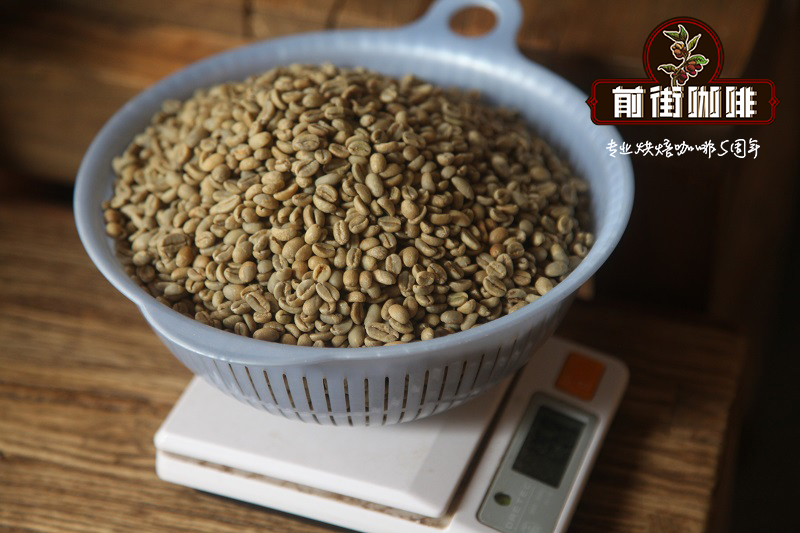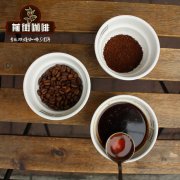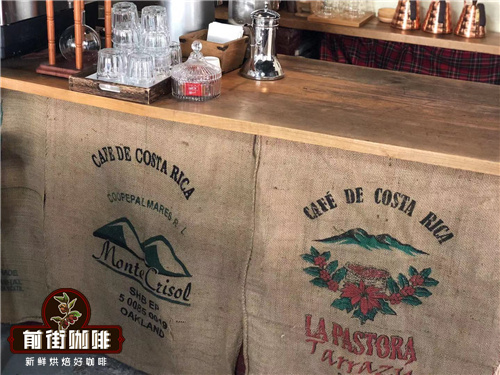Is the coffee of Mongano Cooperative in Congo Cheever Coffee producing area good? How to brew Congolese coffee?

Professional coffee knowledge exchange more coffee bean information please follow the coffee workshop (Wechat official account cafe_style)
Is the coffee of Mongano Cooperative in Congo Cheever Coffee producing area good? How to brew Congolese coffee?
In Swahili, "Muungano" means & # 39; Unity & # 39, guiding farmers who are mainly used in Muungano coffee cooperatives. Batembo and Rwanda were originally divided by war in the eastern part of the Congo. Through cooperation, they work together again to create a better future for their families. From 350 founding members in 2009, the cooperative has grown to more than 4000 members in 2014, and Muungano farmers are committed to producing high-end specialty washed Arabica coffee. They invest in coffee nurseries and set up community-level cleaning stations; by planting new saplings and strictly harvesting coffee refurbished land. Muungano, which has received extensive training in cupping skills and the common language of the professional coffee market, opened two new cleaning stations in 2014.
Farmers tend to naturally use homemade compost and mulch. As coffee is interspersed with villages and homes, they think it is important for people's health as well as the environment. Take measures to combat the danger of landslides in heavy rain, including planting trees to strengthen the soil structure.
The Democratic Republic of the Congo is located in central Africa
The equator runs through the north-central part, and the local forest cover is about 58.7%.
Is the seventh largest tropical forest in the world.
Agricultural products are also rich, most of which are tropical crops.
The border accounts for the vast majority of the Congo basin.
The depression in the middle of the basin floor is about 300 meters above sea level.
Suitable for planting Robusta coffee
To the easternmost is the edge of the African graben with frequent volcanic activity.
It is near Lake kivu, about 1460 meters above sea level.
The coffee beans in the kivu-producing area of Congo get their name from Lake Kivu on the border with Rwanda.
Kivu is bordered by Uganda, Rwanda and Burundi to the west and Lake Tanganyika to the east.
The tropical plateau surrounding Lake Kivu
The average annual temperature is about 19 degrees Celsius, enjoying a warm and humid climate and fertile land.
Similar to the neighboring outstanding Arabica coffee producing countries
Geographical environment (such as Kenya, Rwanda and Tanzania).
Once upon a time, the coffee performance in this area was even comparable to that of Kenya.
The era of colonization by Belgium at the beginning of the 20th century
Many coffee plantations have been set up in the area.
Because transportation is inconvenient and domestic political and economic factors are unstable.
(civil war continued due to the direct intervention of neighboring regimes and the support of neighboring countries to armed groups)
The production and marketing of local agricultural products are deeply affected by it.
So even if it is nurtured by Lake Kivu, the coffee industry is not as developed as that of neighboring countries.
Congo joined Eastern Africa Fine Coffee Assosiation in February 2010
Become the 11th member of the organization with a view to further improving its coffee quality and export volume
In the 21st century, the local coffee industry is undergoing another renaissance.
Flavor: grass flavor citrus fruit sweet chocolate malt syrup
Producing area: Keefe Lake
Producer: Menggano Cooperative
Treatment: traditional washing treatment
Rating: SC16/18
Variety: primary bourbon species
Altitude: 1300 to 1460 m
Flavor description: grass flavor, apple acidity, sweet citrus fruits, chocolate, maltose syrup, black sugar and chocolate aroma tail, clean, smooth, full of texture of African beans.
Qianjie recommended cooking:
Filter cup: Hario V60
Water temperature: 88 degrees
Degree of grinding: small Fuji degree of grinding 4
Cooking methods: the ratio of water to powder is 1:15, 15g powder, the first injection of 25g water, 25 s steaming, the second injection to 120g water cut off, waiting for the powder bed water to half and then water injection, slow water injection until 225g water, extraction time about 2:00
Analysis: using three-stage brewing to clarify the flavor of the front, middle and back of the coffee. Because V60 has many ribs and the drainage speed is fast, it can prolong the extraction time when the water is cut off.
Important Notice :
前街咖啡 FrontStreet Coffee has moved to new addredd:
FrontStreet Coffee Address: 315,Donghua East Road,GuangZhou
Tel:020 38364473
- Prev

What is the flavor and taste of Ipanema selected beans in Ipanema Manor, Brazil? Chateau Ipanema, Brazil
Professional coffee knowledge exchange more coffee bean information please follow the coffee workshop (Wechat official account cafe_style) Brazil Ipanema estate Ipanema selected beans flavor and taste? How to cook coffee beans in Ipanema Manor, Brazil? Since the introduction of coffee trees from French Guiana (Guyana) in 1720, coffee production has gradually become a science. Before 1990, Brazil
- Next

The characteristics and Flavor of Ethiopian Coffee beans the Origin and Story of Yegashifi and Sidamo Coffee
Professional coffee knowledge exchange more coffee bean information Please follow Coffee Workshop (official Wechat account cafe_style) Coffee birthplace Ethiopia is located in East Africa, and there are as many as 5,000 wild coffee bean varieties found in the forest in the southern Kaffa region alone. It is generally believed that Ethiopia is the source of coffee
Related
- Detailed explanation of Jadeite planting Land in Panamanian Jadeite Manor introduction to the grading system of Jadeite competitive bidding, Red bid, Green bid and Rose Summer
- Story of Coffee planting in Brenka region of Costa Rica Stonehenge Manor anaerobic heavy honey treatment of flavor mouth
- What's on the barrel of Blue Mountain Coffee beans?
- Can American coffee also pull flowers? How to use hot American style to pull out a good-looking pattern?
- Can you make a cold extract with coffee beans? What is the right proportion for cold-extracted coffee formula?
- Indonesian PWN Gold Mandrine Coffee Origin Features Flavor How to Chong? Mandolin coffee is American.
- A brief introduction to the flavor characteristics of Brazilian yellow bourbon coffee beans
- What is the effect of different water quality on the flavor of cold-extracted coffee? What kind of water is best for brewing coffee?
- Why do you think of Rose Summer whenever you mention Panamanian coffee?
- Introduction to the characteristics of authentic blue mountain coffee bean producing areas? What is the CIB Coffee Authority in Jamaica?

